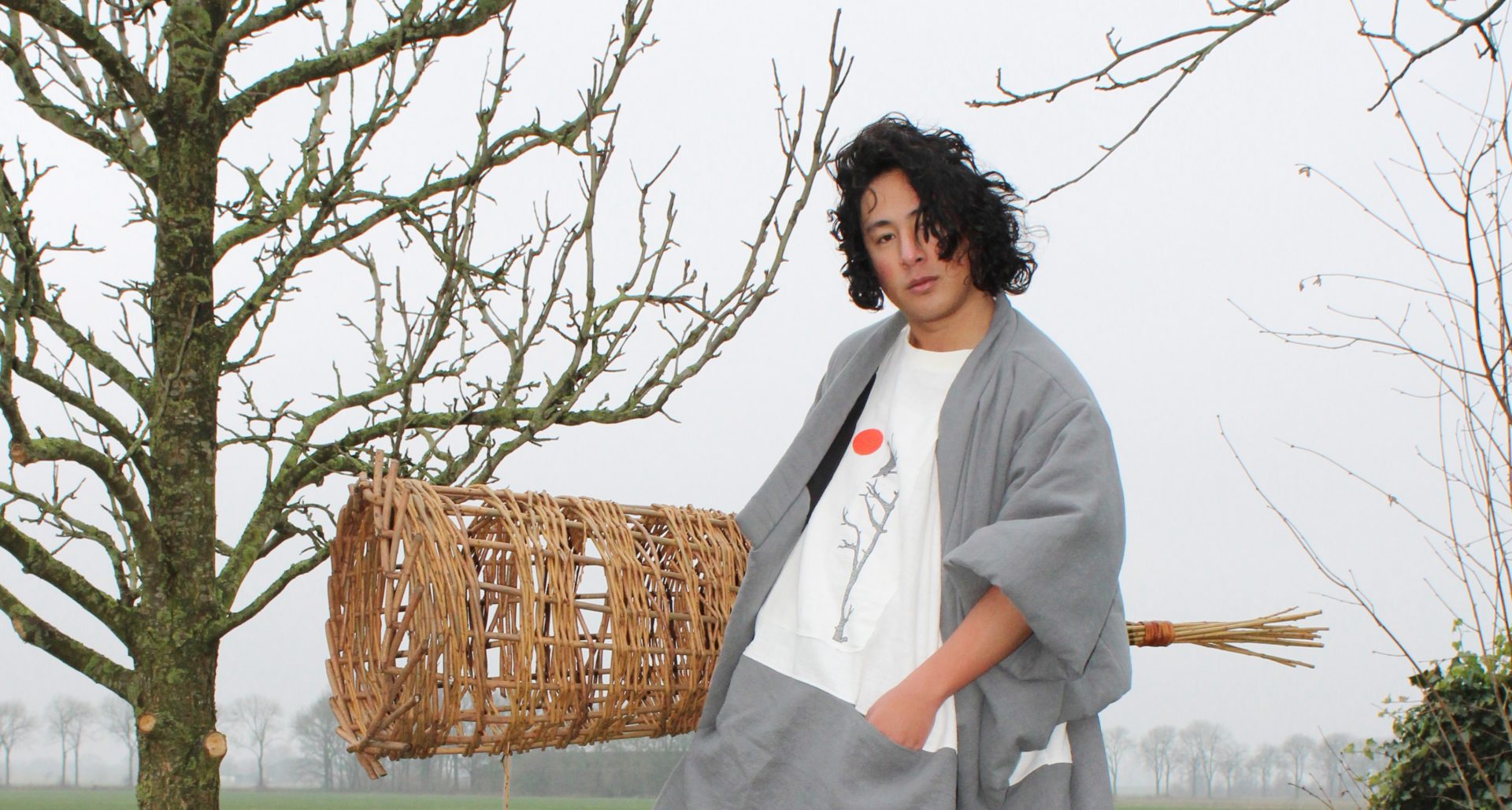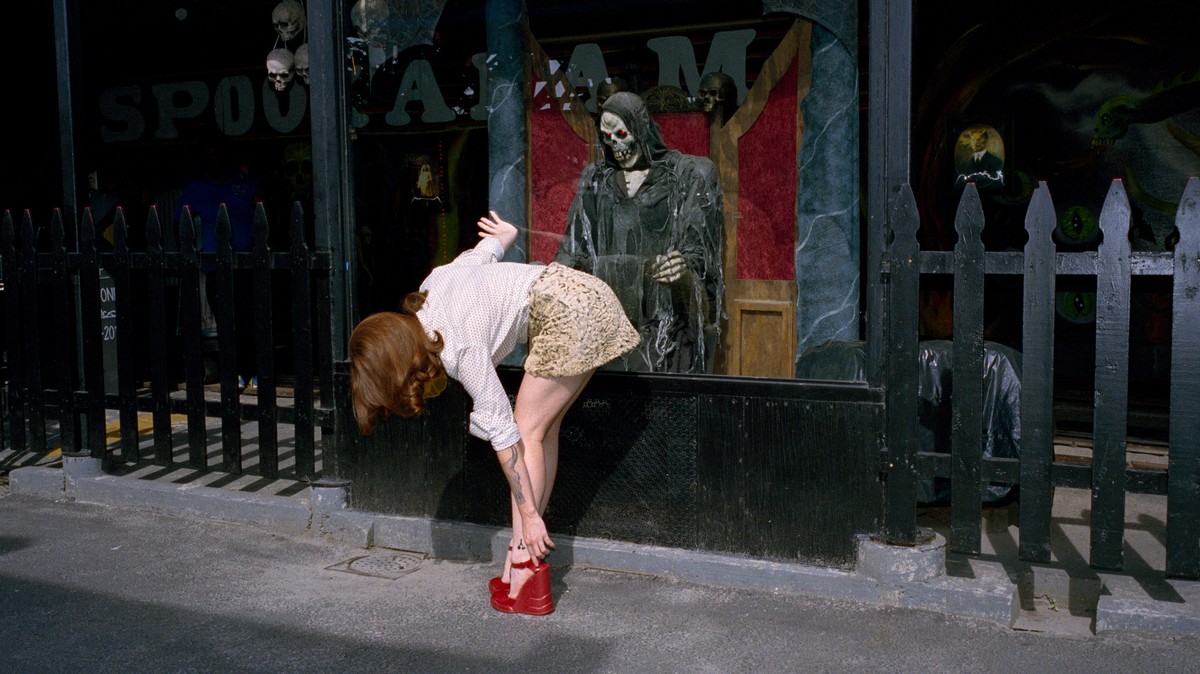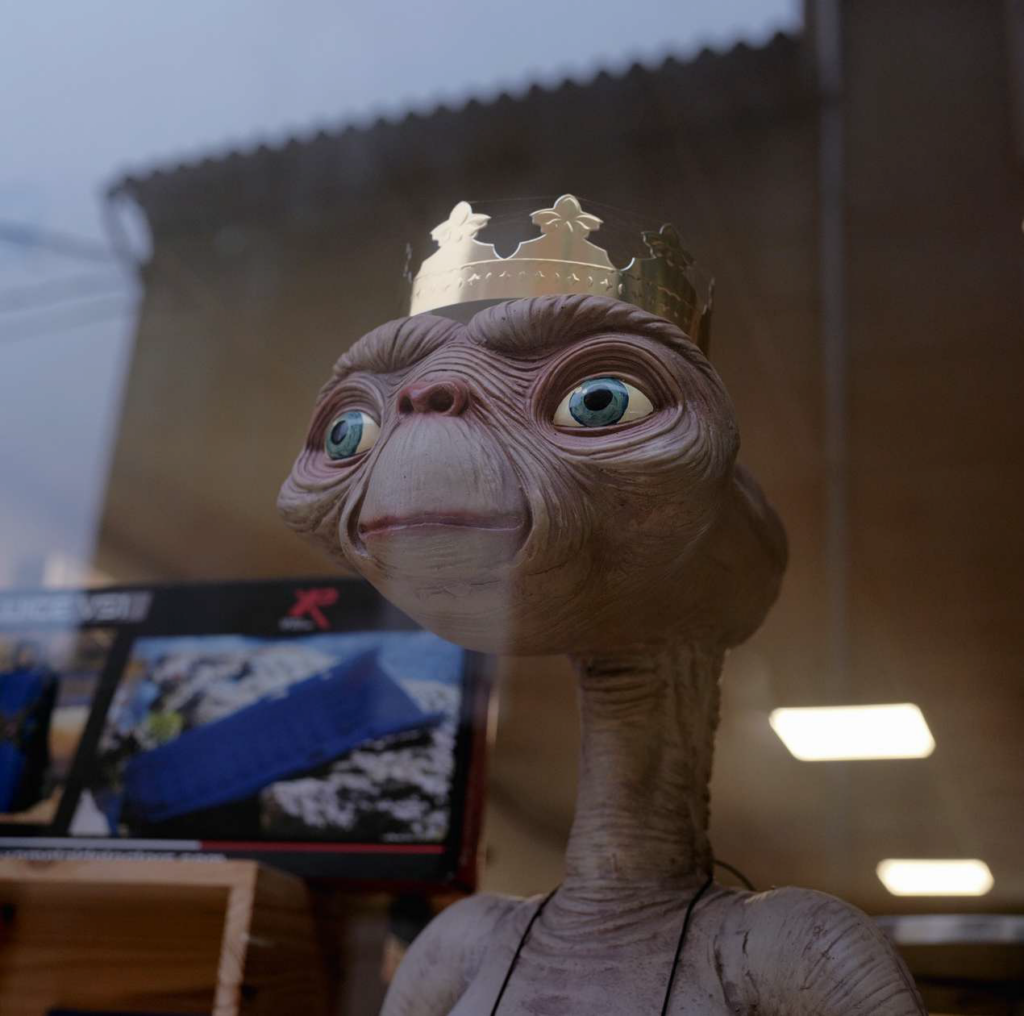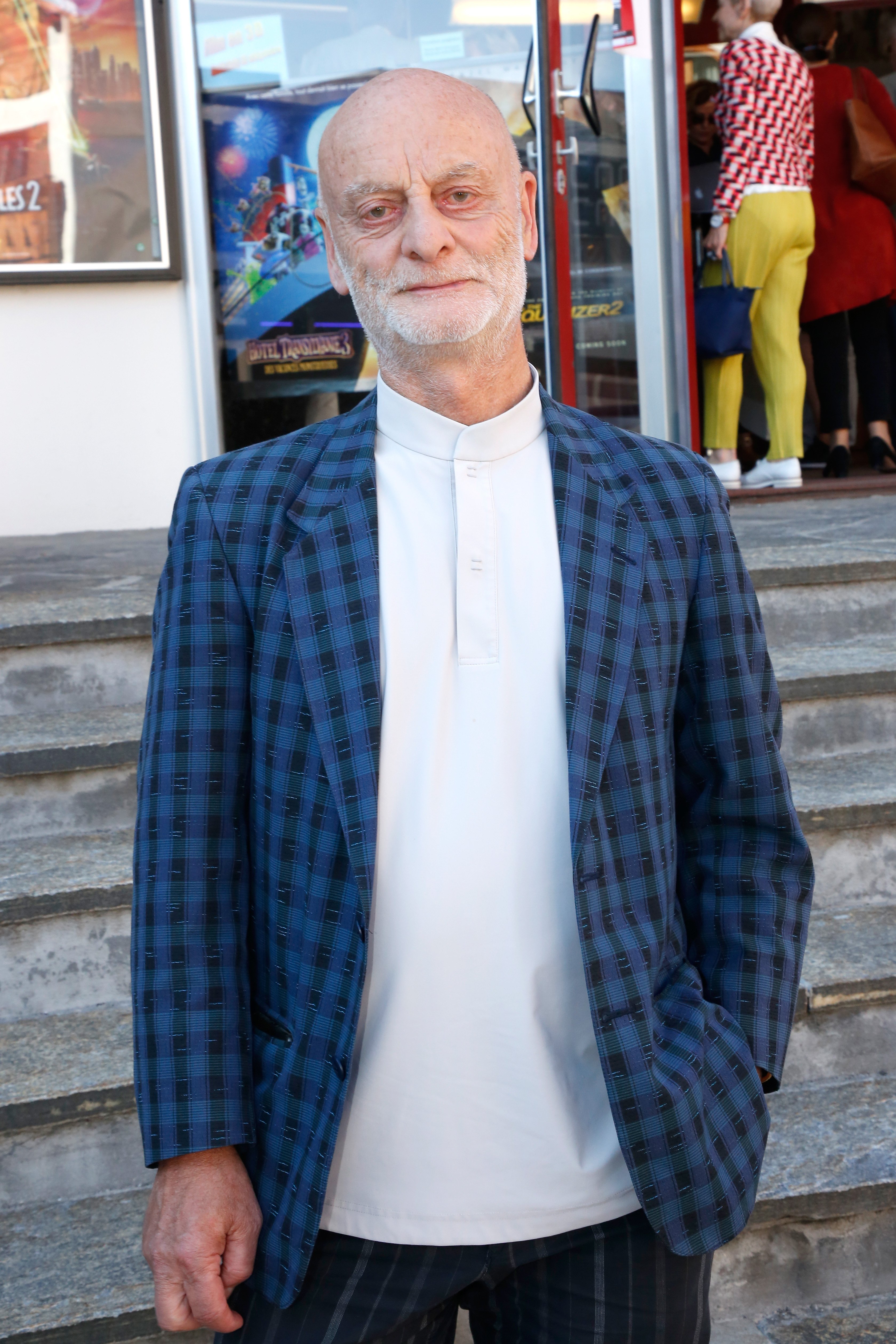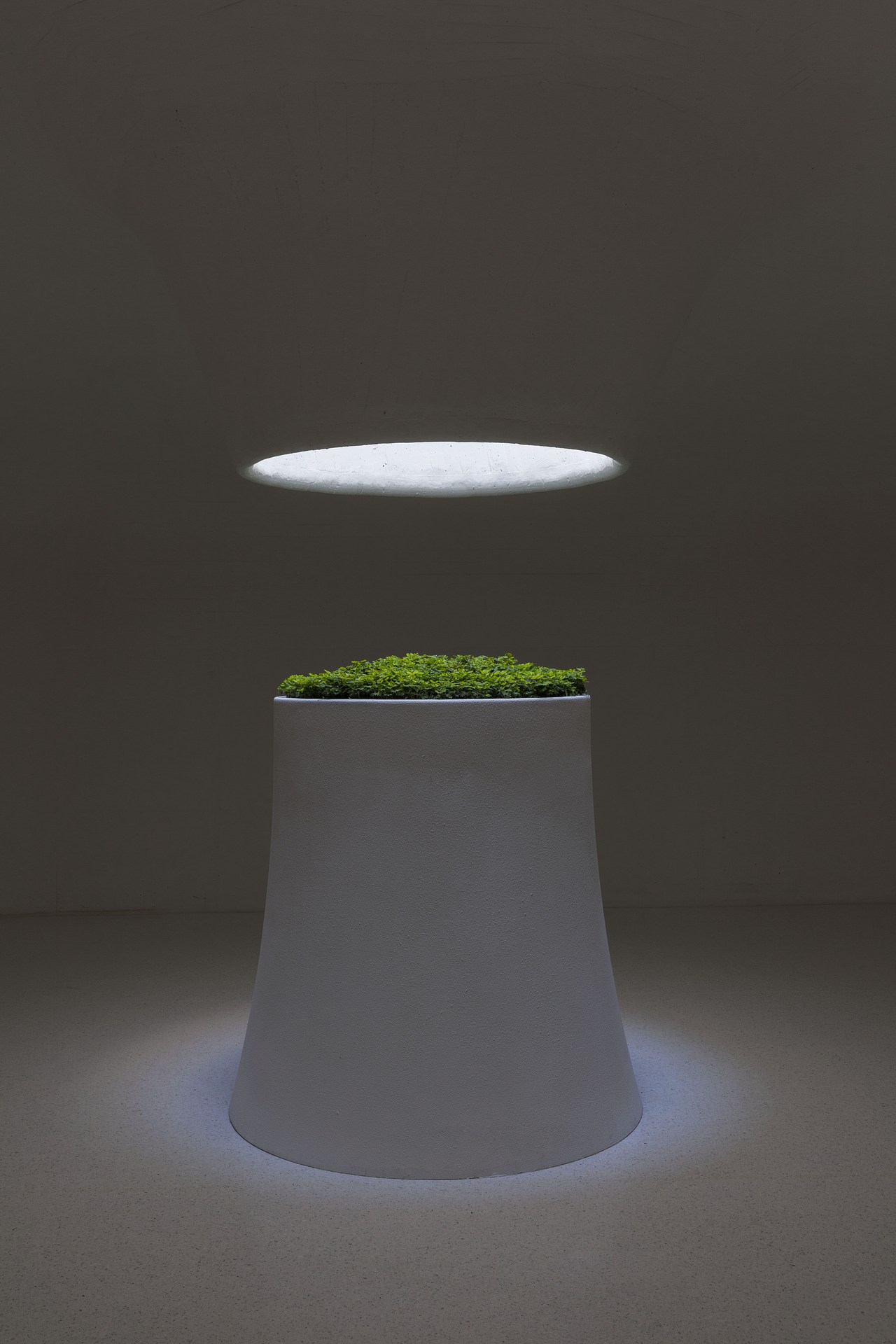Phocis Pole
2017 - Painting (Painting)
82.2 x 133 x 3.2 cm
Rebecca Quaytman
R. H. Quaytman’s family on her father’s side is of Jewish heritage from Poland. In the summer of 2016, Quaytman traveled to Poland to research an upcoming retrospective exhibition taking place in Warsaw and ?ódz, the town from which her great-grandfather emigrated to the United States. Tracing her grandfather’s and great-grandfather’s origins, Phocis Pole is from a series of paintings that explores her paternal lineage. Both men died in 1940 in a car accident in which they were hit by a Long Island Railroad train. During the research trip, Quaytman journeyed to the grounds of the World War II concentration camp in Treblinka and took a series of photographs. The landscape depicted in this painting is based on those photographs. They function as the background to a mystical and intimidating fire that animates memories of this period. The artwork’s name is a reference to the historical region of central Greece named Phocis, which controlled the oracle at Delphi, which was consulted on important decisions throughout the ancient classical world. In this painting, Quaytman attempts to freeze different temporal strata on the same ground in order to blur visual perception, conjuring something ancient about the work. The artist’s investigations of photographic archives are employed as source material for the imagery in her paintings. The archival time spans, the screen-printing, how the work takes its form, the materialization of the object are all superimposed in this work. In her book Spine, Quaytman writes that “My central concern was: What happens when the source of what is depicted disappears and is replaced by a painting.”
In her work, Rebecca Quaytman displays great interest in the dissolution of the image. Expressing the progressive disappearance of representation takes various forms. The artist attempts to freeze different temporal strata on one same ground in order to blur visual perception. Her works are always the result of research that creates links with the historical context of the exhibition space, and take place within her larger body of already existing work which is grouped in chapters. Quaytman’s investigations in the archives, photographic ones in particular, of the institutions who invite her, are generally the source of the images which are then used in her paintings. Screen-printed onto wooden panels, in dimensions that respect the golden rule, covered in gesso, reframed, enlarged, sometimes sprinkled with diamond dust, they have something ancient about them. The near pointillist weft recalls the printing techniques of the 1960s and the large pixels in Kara Walker or Wade Guyton’s work. Though everything is perfectly controlled, our eye hesitates. The archival time spans, the screen-printing, how the work takes its form, the materialization of the object (framing devices) are all superimposed during the ephemeral exhibition, and its aftermath.
Colors:
Related works sharing similar palette

© » KADIST
Shimabuku
2006For the two-channel work Asking the Repentistas – Peneira & Sonhador – to remix my octopus works Shimabuku asked two Brazilian street singers to compose a ballad about his previous works with octopi (in which he created traditional Japanese ceramic vessels to catch octopi, with a fisherman who took him on his boat to test them out as we can see on one of the channel)...

© » KADIST
Frieda Toranzo Jaeger
2017This triptych is based on a Tesla whose interior the artist customized on the Tesla website...

© » KADIST
Li Xiaofei
Combined into a single two-channel HD video, Li Xiaofei’s Ponytail and Chongming Island II are silent portraits of the women assembly line workers at a Chinese kitchenware factory...
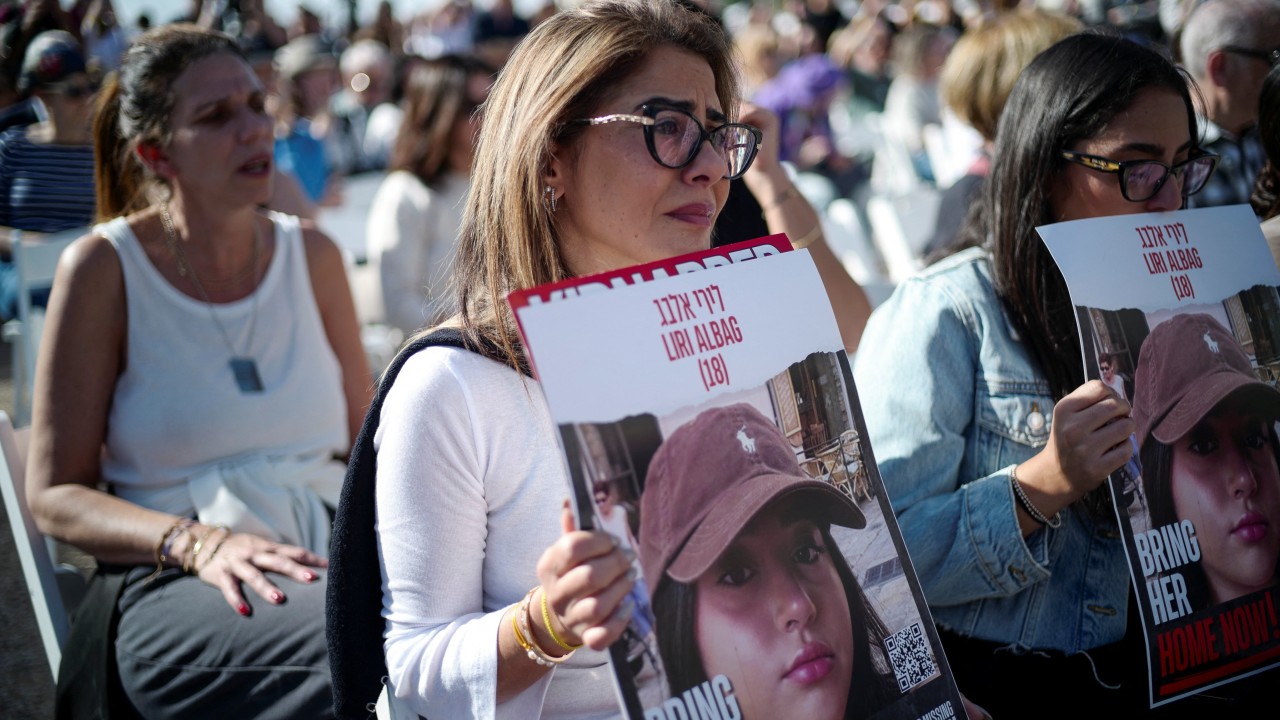
© » SOUTH CHINA MORNING POST
Opinion | How the word ‘hostage’ used to mean something quite different to its modern definition, as the Israel-Gaza war rumbles on | South China Morning Post Advertisement Advertisement Hostages who were abducted by Hamas gunmen during the October 7 attack on Israel are handed over by militants to the International Red Cross in an unknown location in the Gaza Strip on November 30, 2023...

© » KADIST
Martin Boyce
2003In the installation Our Love is like the Flowers, the Rain, the Sea and the Hours, Martin Boyce uses common elements from public gardens – trees, benches, trashbins– in a game which describes at once a social space and an abstract dream space...

© » KADIST
Gilad Ratman
2014Originally a multi-channel video installation with sculptures and sound, this iteration of The Workshop by Gilad Ratman is a three-channel distillation of the expansive project that follows a group’s underground pilgrimage from Mt...

© » KADIST
Khvay Samnang
2017Originally commissioned for documenta 14, Khvay Samnang’s two-channel video work Preah Kunlong (The way of the spirit) takes land politics, resource extraction and Indigenous Cambodian resistance as its primary concern...

© » HYPERALLERGIC
Archaeologists Find Evidence of Hallucinogenic Drug in Ancient Rome Skip to content A bust of Emperor Trajan surrounded by black henbane seends and flowers and a femur discovered by archaeologists (edit Valentina Di Liscia/ Hyperallergic ) Two new archaeological finds suggest Roman subjects at the northern edge of the ancient empire used a hallucinogenic and poisonous plant called black henbane, the effects of which were described by Greek philosopher Plutarch as “not so properly called drunkenness” but rather “alienation of mind or madness.” Dutch zooarchaeologists Maaike Groot and Martijn van Haasteren and archaeobotanist Laura I...

© » ARTS EQUATOR
Plastic Kingdom: art exhibition questions Cambodia’s rampant waste problem (via SEA Globe) | ArtsEquator Thinking and Talking about Arts and Culture in Southeast Asia Articles November 28, 2018 An new art exhibition in Phnom Penh featuring works by Cambodian and foreign artists will raise questions about plastic use and recycling, through woodcarvings, illustrations and even a motorbike...

© » KADIST
Burak Delier
2013Burak Delier’s sculpture Homage to Balotelli’s Missed Trick is a symbol of resistance to the demand for success and performance...

